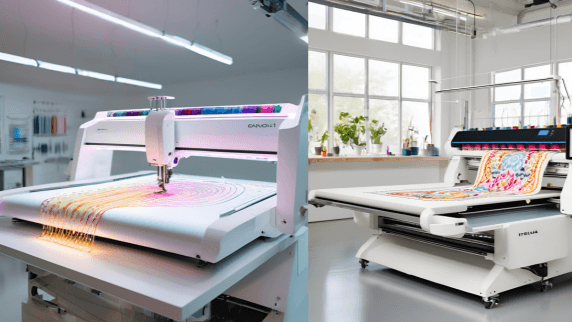Introduction
The world of textiles is no longer just about patterns and stitching—it’s about interactivity, data, and connectivity. With the rise of smart textiles and wearable technology,
embroidery digitizing has stepped into a new era. It’s no longer limited to logo patches or monogramming uniforms; it’s now contributing to garments that track heart rates, regulate body temperature, or even light up in response to sound. In this comprehensive post, we explore how embroidery digitizing is revolutionizing the smart textile industry, and what it means for designers, manufacturers, and consumers.
What Is Embroidery Digitizing in the Age of Smart Textiles?
Embroidery digitizing is the process of converting artwork into a stitch file that can be read by embroidery machines. Traditionally, it was used for logos, badges, or decorative patterns. But now, thanks to advancements in fabric technology and digitizing software, this same process is being integrated with
e-textiles—fabrics embedded with sensors, conductive threads, and microprocessors.In this new era, digitizing files must take into account not only aesthetics and stitch efficiency but also electrical pathways, insulation, and pressure points.
How Embroidery Digitizing Supports Smart Textile Development
1. Precision Placement of Conductive Threads
Smart garments use conductive threads to transmit data. Digitizing software helps designers plot precise pathways for these threads, ensuring they don’t interfere with comfort or aesthetics. A single misplaced stitch could compromise data transfer.
2. Integration with Microcontrollers and Sensors
Embroidery machines can now stitch around embedded tech like microcontrollers or biometric sensors. Digitizing allows for exact placement and custom stitch types that reduce vibration or movement-related issues.
3. Efficiency in Mass Customization
The flexibility of digitized embroidery files allows
manufacturers to mass-produce customized smart apparel. This means quicker design changes, easier testing, and faster adaptation to user feedback—all driven by the embroidery digitizing process.
4. Design Meets Functionality
Digitizing software is also being used to create patterns that are aesthetically pleasing and functional. For instance, a glowing jacket can be both a fashion statement and a safety garment for night runners.
Emerging Applications of Digitized Embroidery in Smart Wearables
Healthcare Monitoring
- Embroidered patches that monitor heart rate, muscle movement, and breathing.
- Smart bras and shirts with digitized sensors for post-surgery monitoring.
Sports and Fitness
- Shirts with digitized threads that track posture or step count.
- Temperature-regulating embroidery that cools down athletes during intense workouts.
Military and Tactical Gear
- Intelligent uniforms with GPS-embedded embroidery.
- Communication-linked patches with embroidered antenna threads.
Fashion and Entertainment
- LED-embroidered dresses for runway shows.
- Interactive embroidery that reacts to music or voice commands.
Best Practices for Digitizing in Smart Textile Projects
Use Specialized Software
Tools like Wilcom, Pulse, and Hatch are adapting to smart textile demands. Use their advanced settings to manage thread tension, stitch density, and layering.
Collaborate with Hardware Engineers
Your embroidery design might need to connect with hardware. Work closely with tech engineers to plan stitch types and patterns around sensors.
Optimize for Washability
Smart textiles must be washable. Use protective embroidery layers and water-resistant conductive threads when digitizing such designs.
Choose the Right Materials
Conductive threads like silver-coated nylon or stainless steel fiber require careful stitch planning to prevent breakage.
Challenges to Consider
Thread Resistance & Signal Loss
Improper digitizing can increase electrical resistance in conductive threads.
Machine Limitations
Not all embroidery machines are ready for this level of complexity. High-precision commercial models are often needed.
Design Constraints
Digitizing for smart textiles limits your creative freedom. Functional pathways must take precedence over artistic layout.
The Future of Embroidery Digitizing in Smart Textiles
We are just scratching the surface. AI-powered digitizing software will soon be able to auto-correct stitching paths for optimal electrical flow. Custom designs will adapt in real-time based on user body metrics. Sustainability will also play a role, with biodegradable smart embroidery threads already in development.Whether you’re an embroidery artist, apparel manufacturer, or tech innovator, the time to embrace the fusion of thread and technology is now. Embroidery digitizing is no longer just a service—it’s a cornerstone of wearable innovation.
Conclusion
Embroidery digitizing has evolved into a powerful tool at the intersection of technology and textile art. As smart textiles gain ground across industries—from healthcare to high fashion—digitized embroidery will play an increasingly vital role. It’s no longer about stitching logos; it’s about connecting people to their clothing in ways never imagined before. Stay ahead of the curve by mastering digitizing techniques that meet the demands of modern interactive garments.


